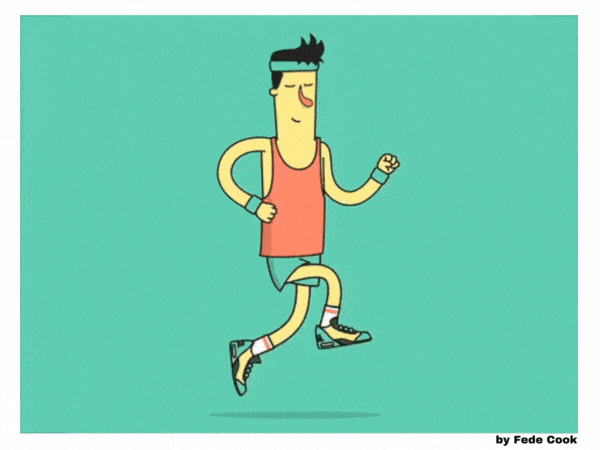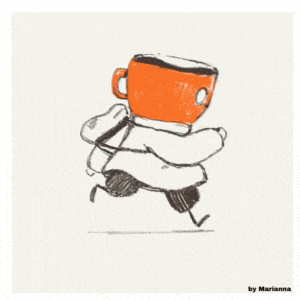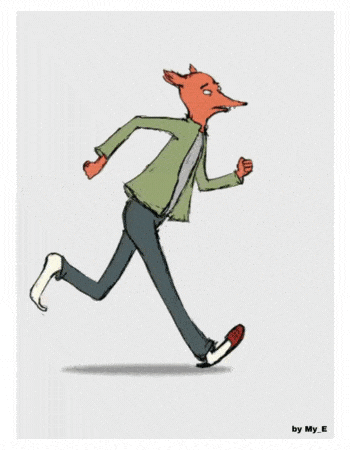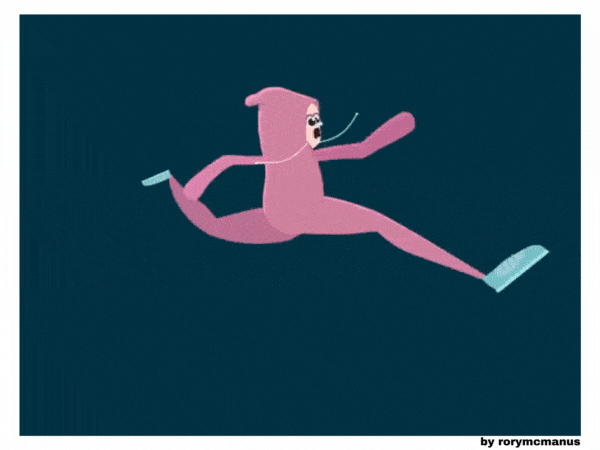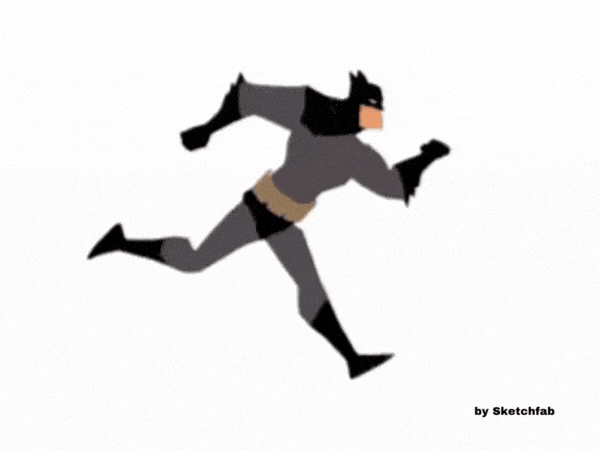Running animation cycles can be broken down into just 9 easy poses.
In this article, we will answer how to make a running animation. I have listed the key poses to model your run cycles after.
What is the difference between Walk cycles and Run cycles?
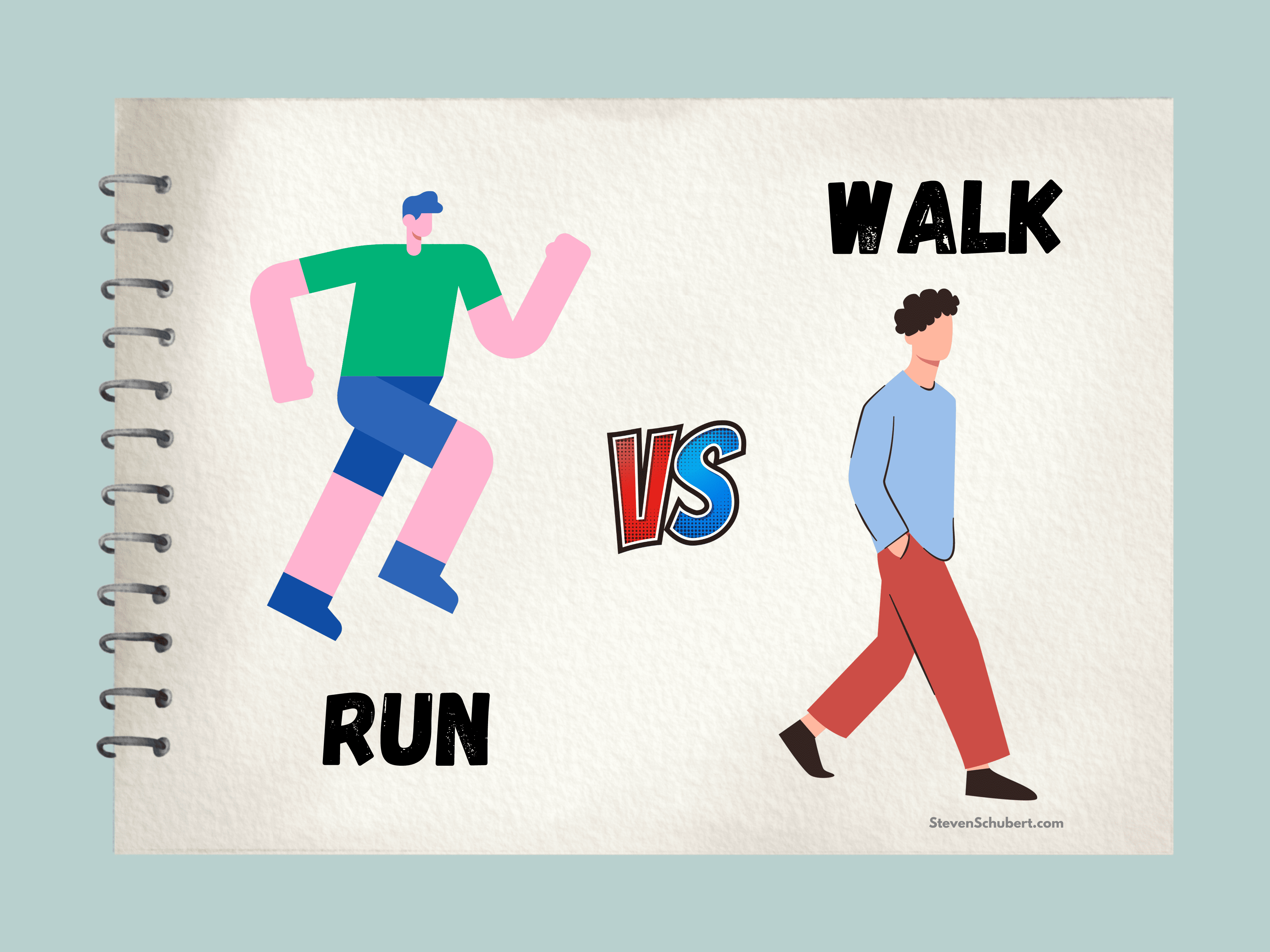
The four main poses for walking cycles are Contact, Down, Passing, and Up.
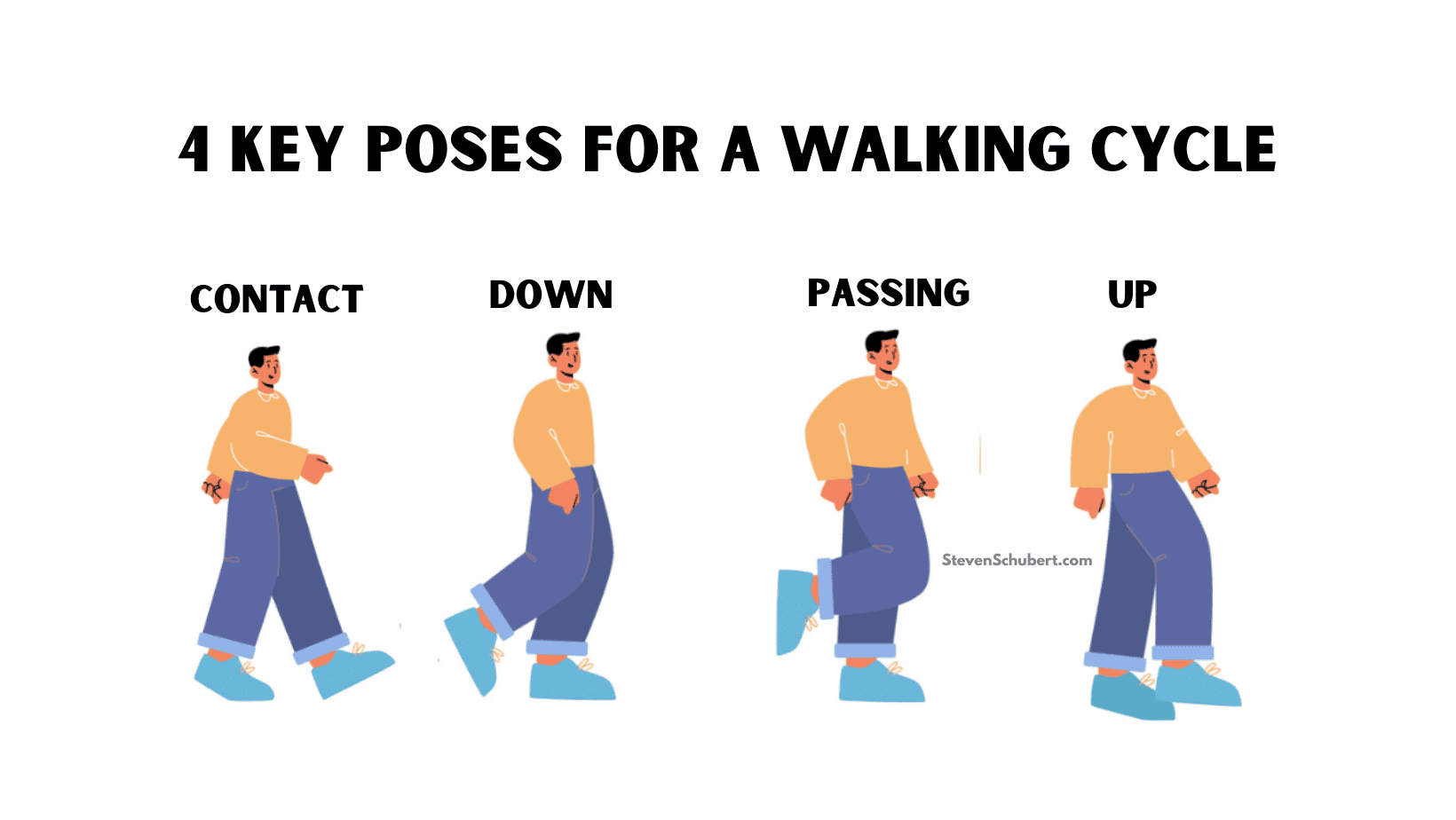
The four main poses for running cycles are Contact, Passing, Takeoff, and Up.
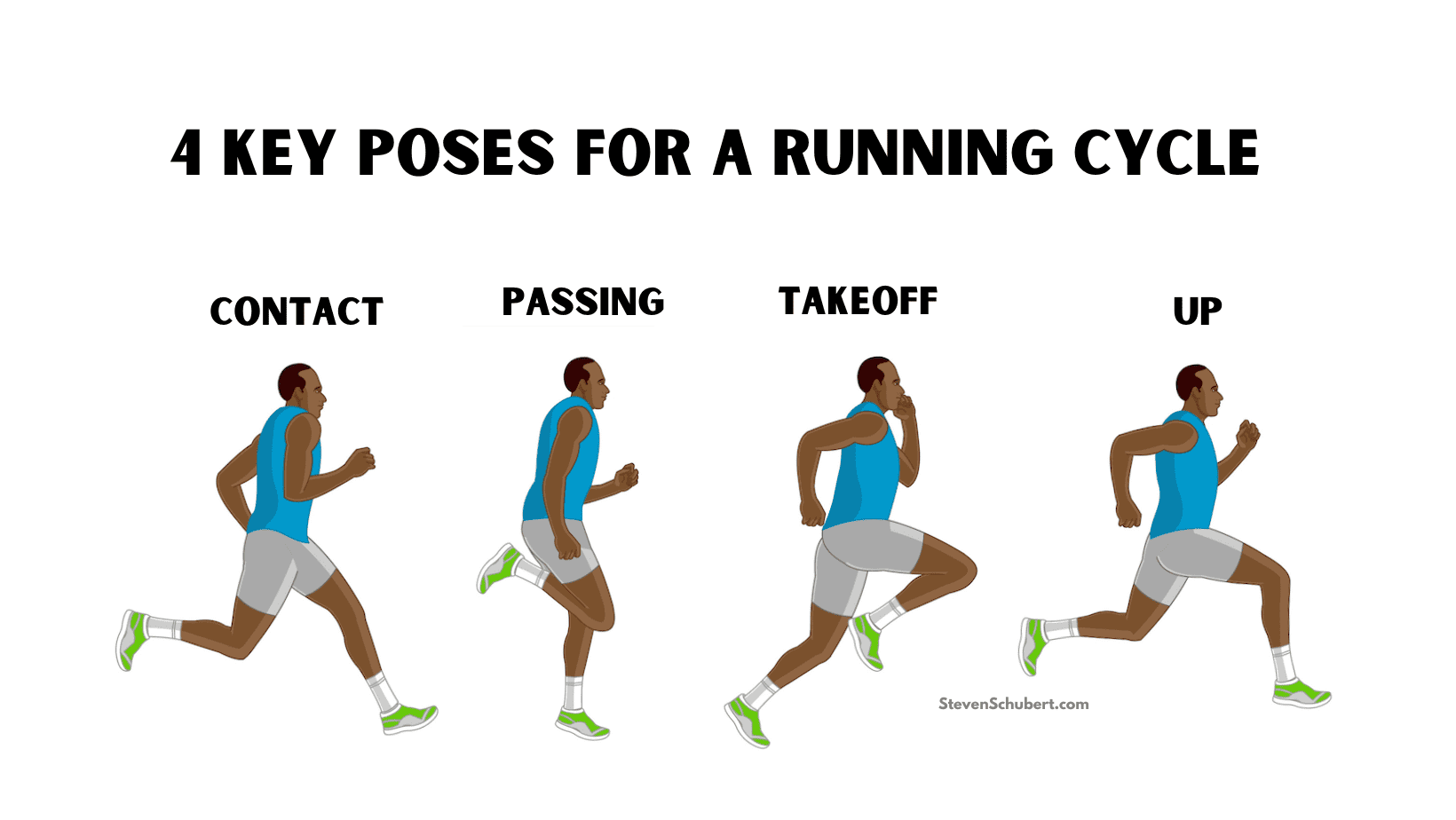
A run cycle involves more rapid leg movement compared to a more relaxed walking motion.
The upper body movements are different for a run cycle versus a walk cycle.
During a run, the arms will swing higher and faster than when walking.
What are Floor Guidelines?

When drawing a running animation, it's important to map out where each foot will land on the floor before you draw the character.
What are the 9 Key Poses for a 24-Frame Run Cycle?
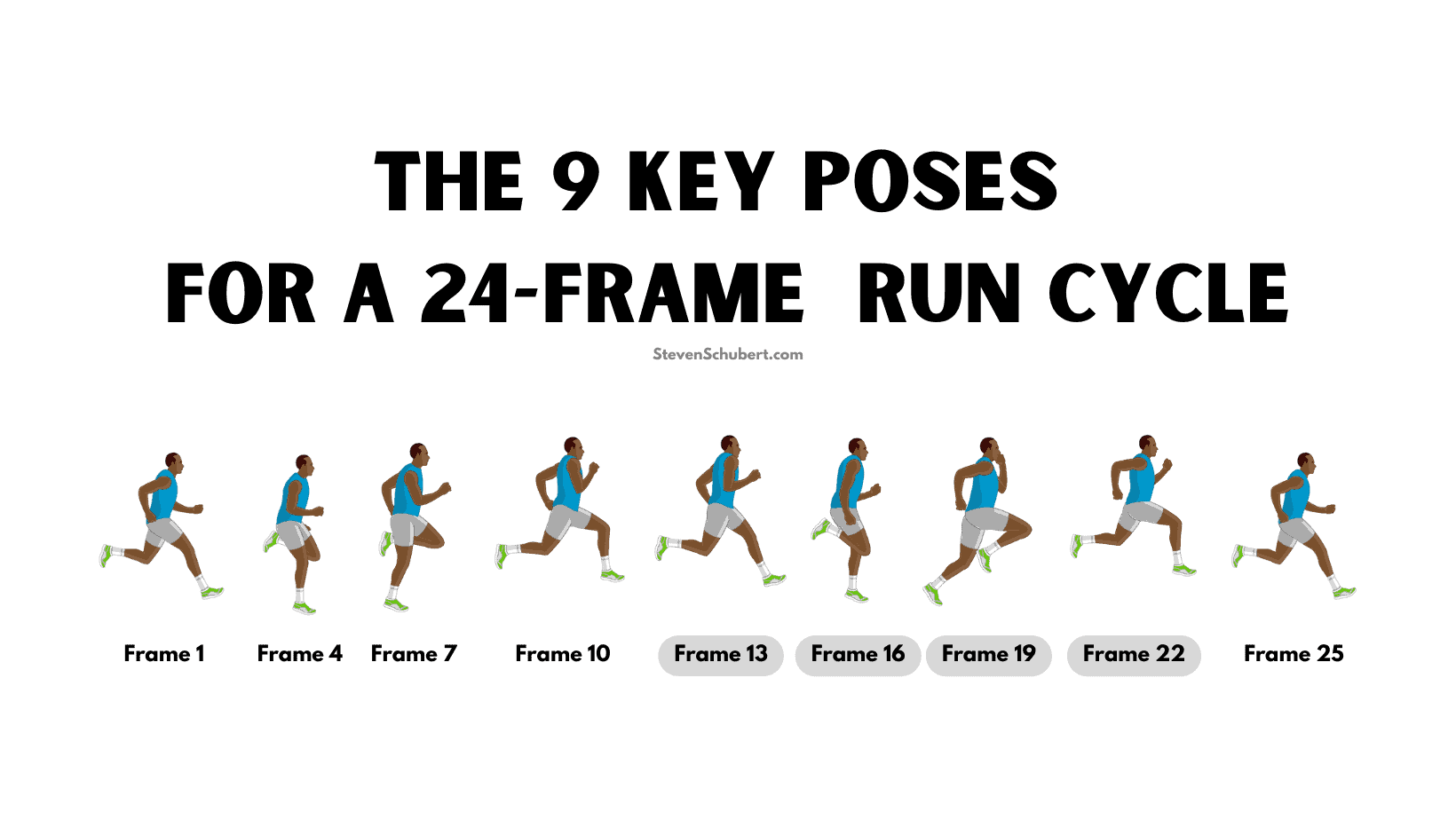
A character running animation will hit a key pose every 3 frames. Frame 24 is the last in the run cycle. Frame 25 is the first frame of the next cycle. And the cycle is looped.
You can add fewer or more frames to your animation. But I'd stick to 24 frames per second.
The right leg is starting my cycle. The right or left leg can start the cycle, it's up to you.
Frame 1 - Right Leg Contact Pose
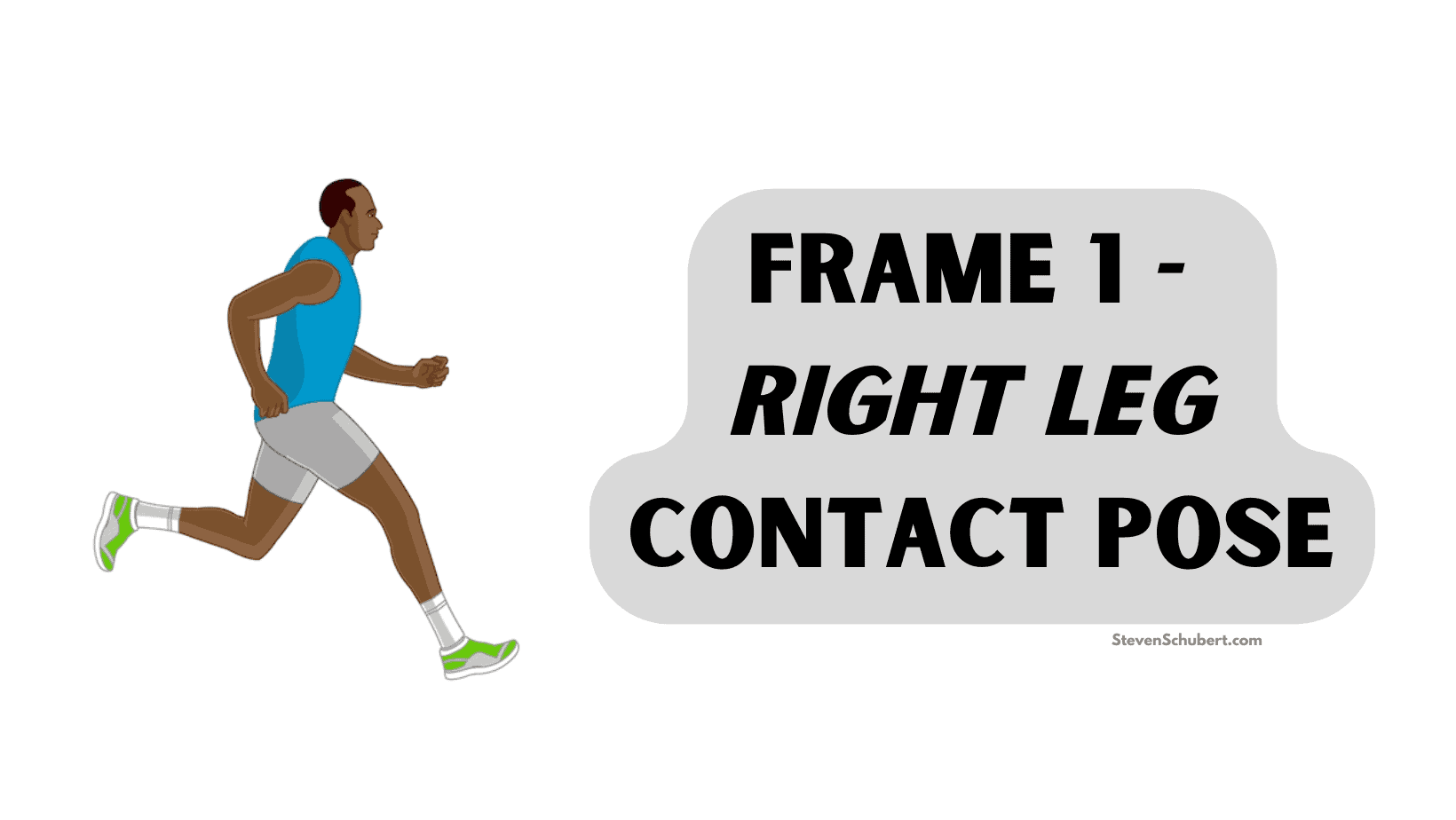
This is the first frame and the first pose of the running cycle.
The right heel of the character first touches the ground.
The trailing left foot is airborne and behind the body.
Both the right and left legs are extended in opposite directions.
The arms are in opposition to the legs for balance. If the right leg is forward, the right arm is back, and vice versa.
The arms begin to swing back to the body.
Frame 4 - Right Leg Passing Pose
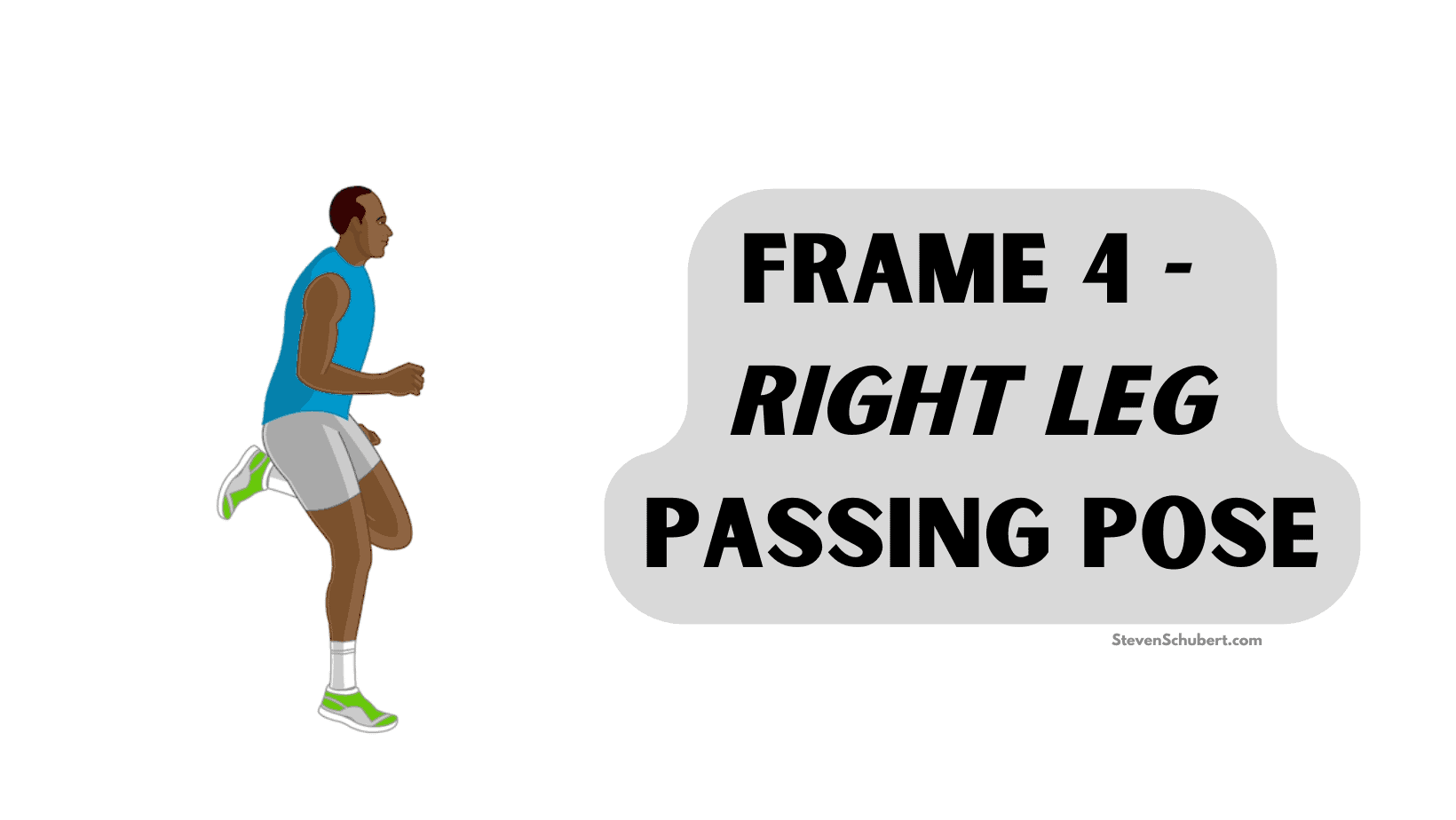
This first passing pose occurs between the 'Right Leg Contact Pose' and the 'Right Leg Down Pose'.
In this passing position, the weight-bearing right leg is straight with the torso and under the body while the left leg is lifting and bent at the knee.
The left foot is passing by the right leg; keeping the right foot planted.
The arms are swinging passing each other in a completely neutral position.
This is the transition point in the run cycle, switching from one foot to the other.
Frame 7 - Right Leg Takeoff Pose
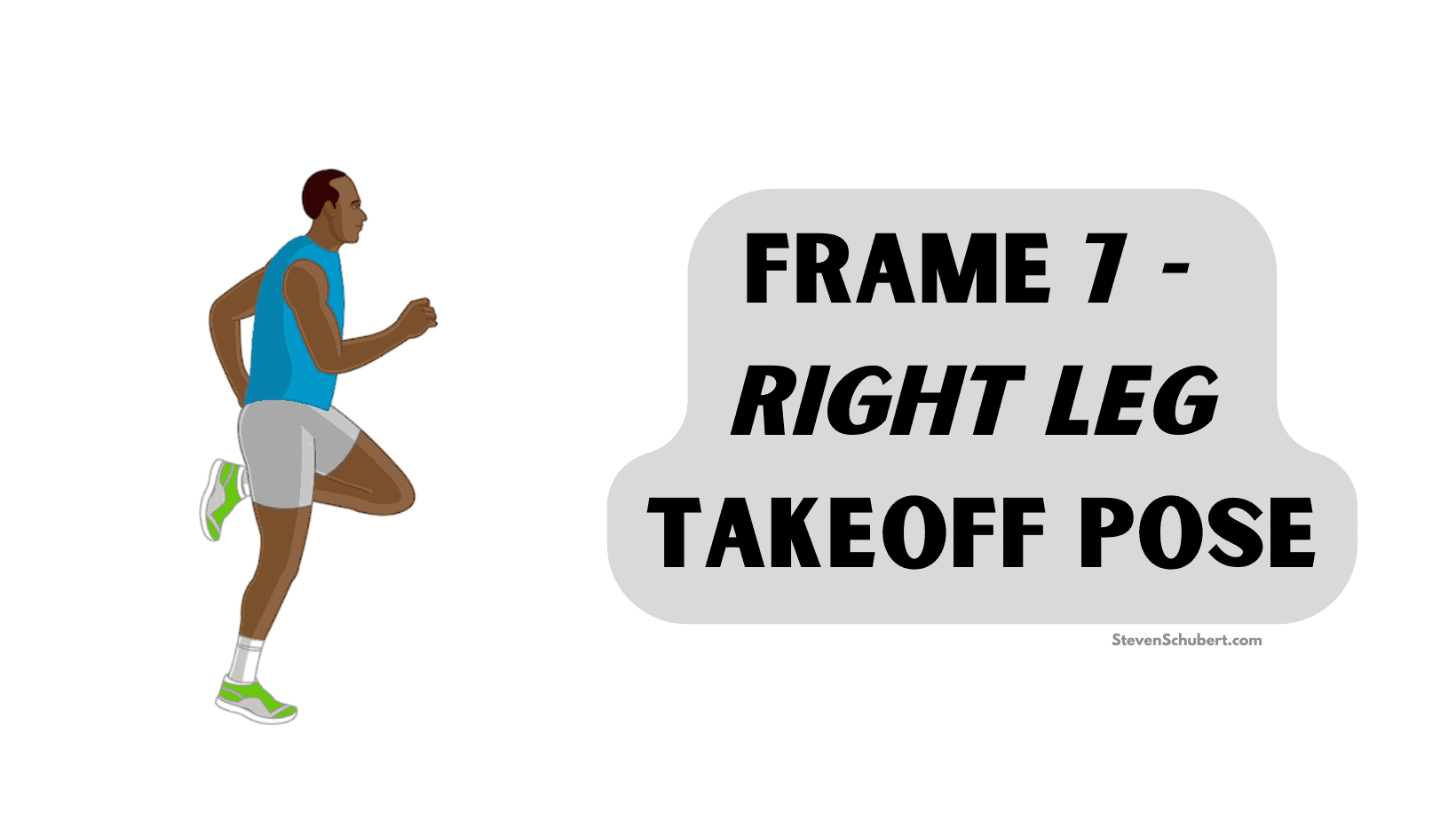
This position happens after the 'Right Leg Passing Pose' and before the 'Right Leg Up Pose'.
The left foot now leads as the right leg begins to trail.
Keep the right foot planted as the body bears its full weight. This frame is the greatest downward force in the run cycle.
Both the right and left legs should be bent.
Each arm begins to separate from its neutral position.
Frame 10 - Right Leg Up Pose
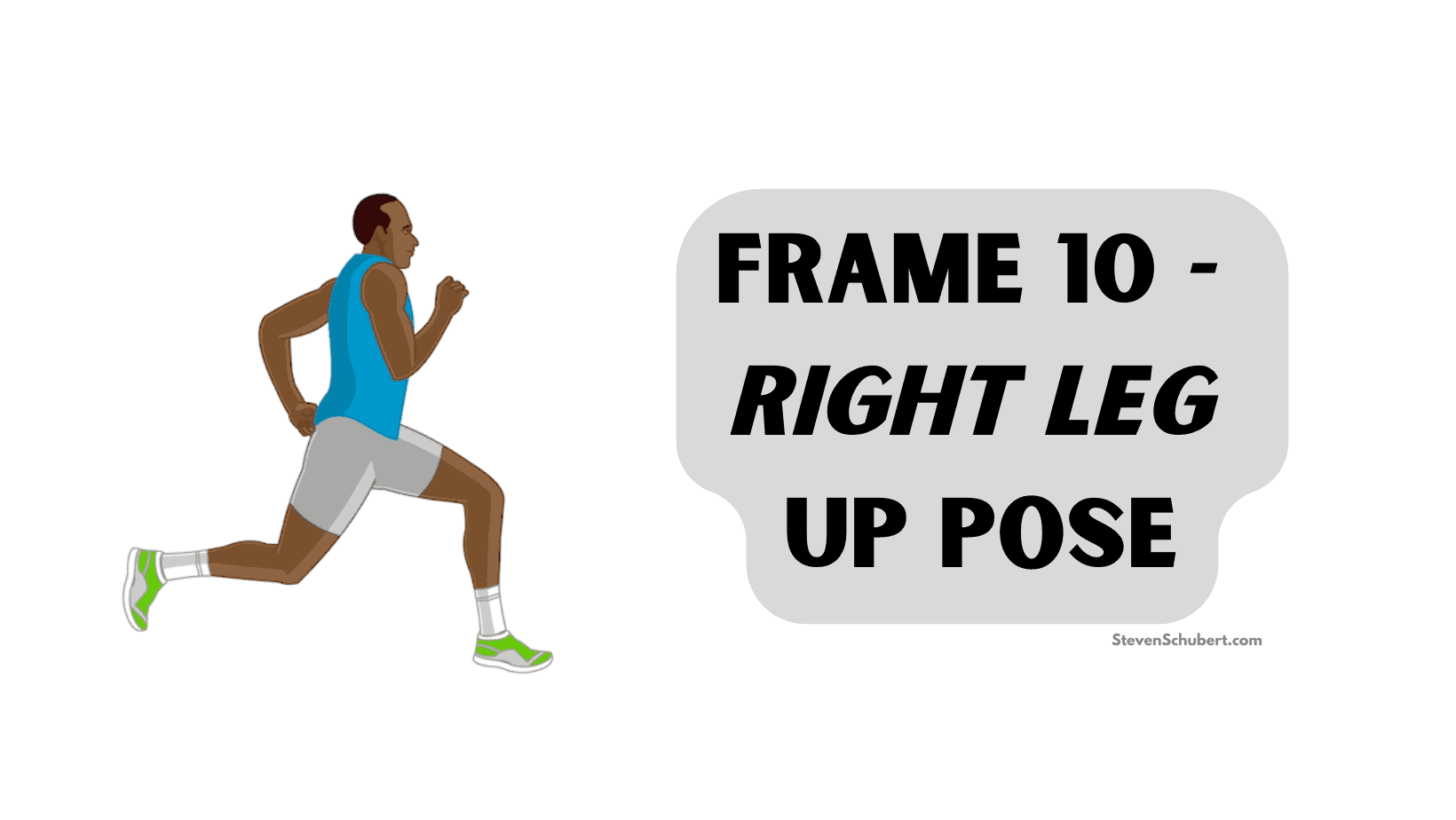
This position stands out from the rest because it's the only key pose where both of the character's feet leave the ground.
This frame happens after the 'Right Leg Takeoff Pose' but before the 'Left Leg Contact Pose'.
The character's body is suspended in the air as the legs are fully extended in opposite directions.
In the 'Right Leg Up Pose', the character's body is at its highest point.
The arms are fully extended away from each other.
Frame 13 - Left Leg Contact Pose
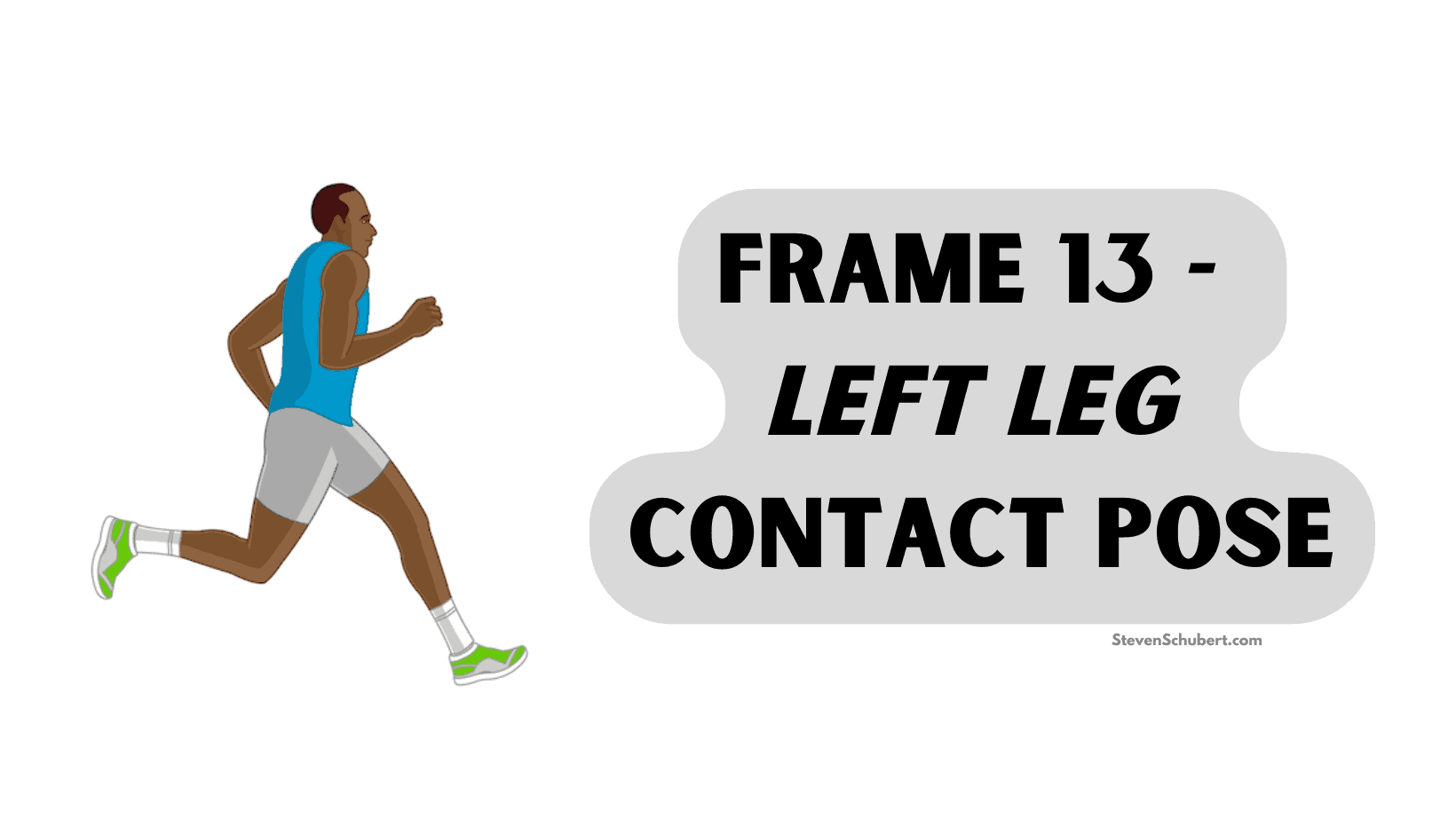
Now the left heel of the character touches the ground.
The trailing right foot is airborne and behind the body.
Both the left and right legs are extended in opposite directions.
The arms are also in opposition to the legs for balance.
The arms begin to swing back to the body.
Frame 16 - Left Leg Passing Pose
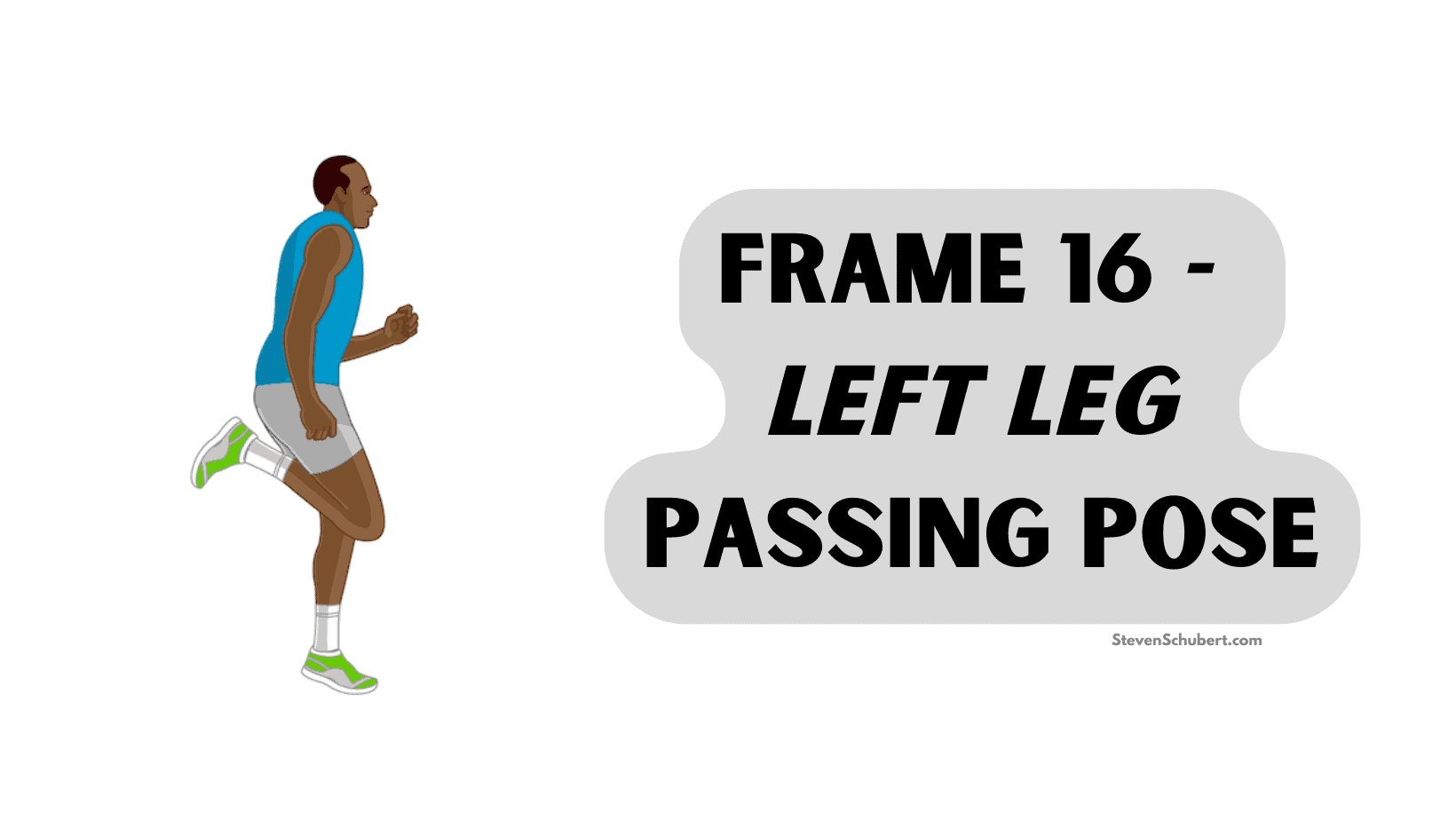
This second passing pose occurs between the 'Left Leg Contact Pose' and the 'Left Leg Takeoff Pose'.
In this passing position, the weight-bearing left leg is straight with the torso and directly beneath the body while the right leg is lifted, bent at the knee, and also beneath the body.
The right leg is passing by the left leg as the left foot is flat on the ground.
The arms are in a neutral position with the least amount of extension.
Frame 19 - Left Leg Takeoff Pose
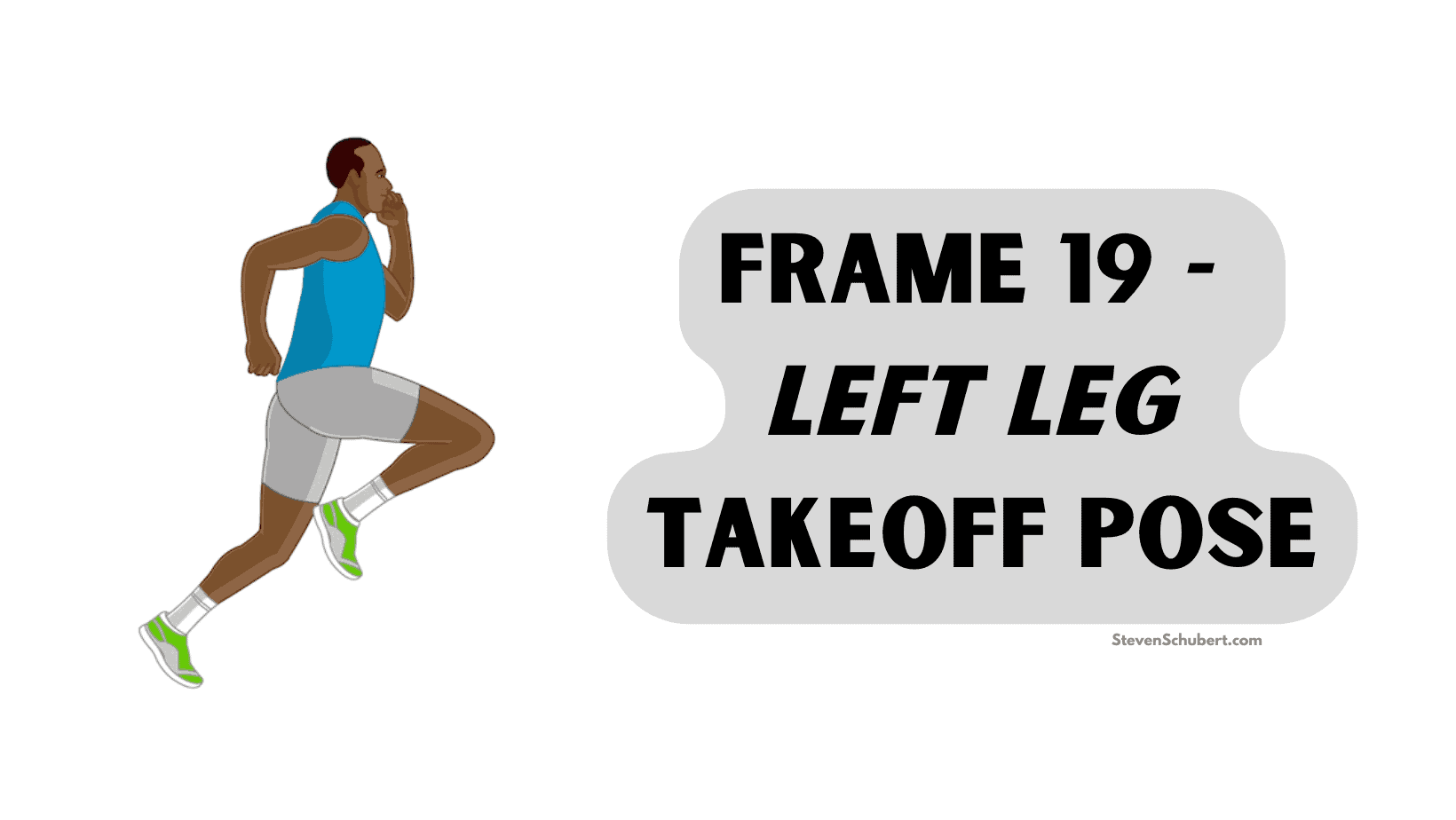
This position occurs after the 'Left Leg Passing Pose' and before the 'Left Leg Up Pose'.
The right foot is now leading.
Keep the left foot planted as the body bears its full weight. This frame is the greatest downward force in the run cycle.
The arms begin to separate in the opposite direction.
Frame 22 - Left Leg Up Pose
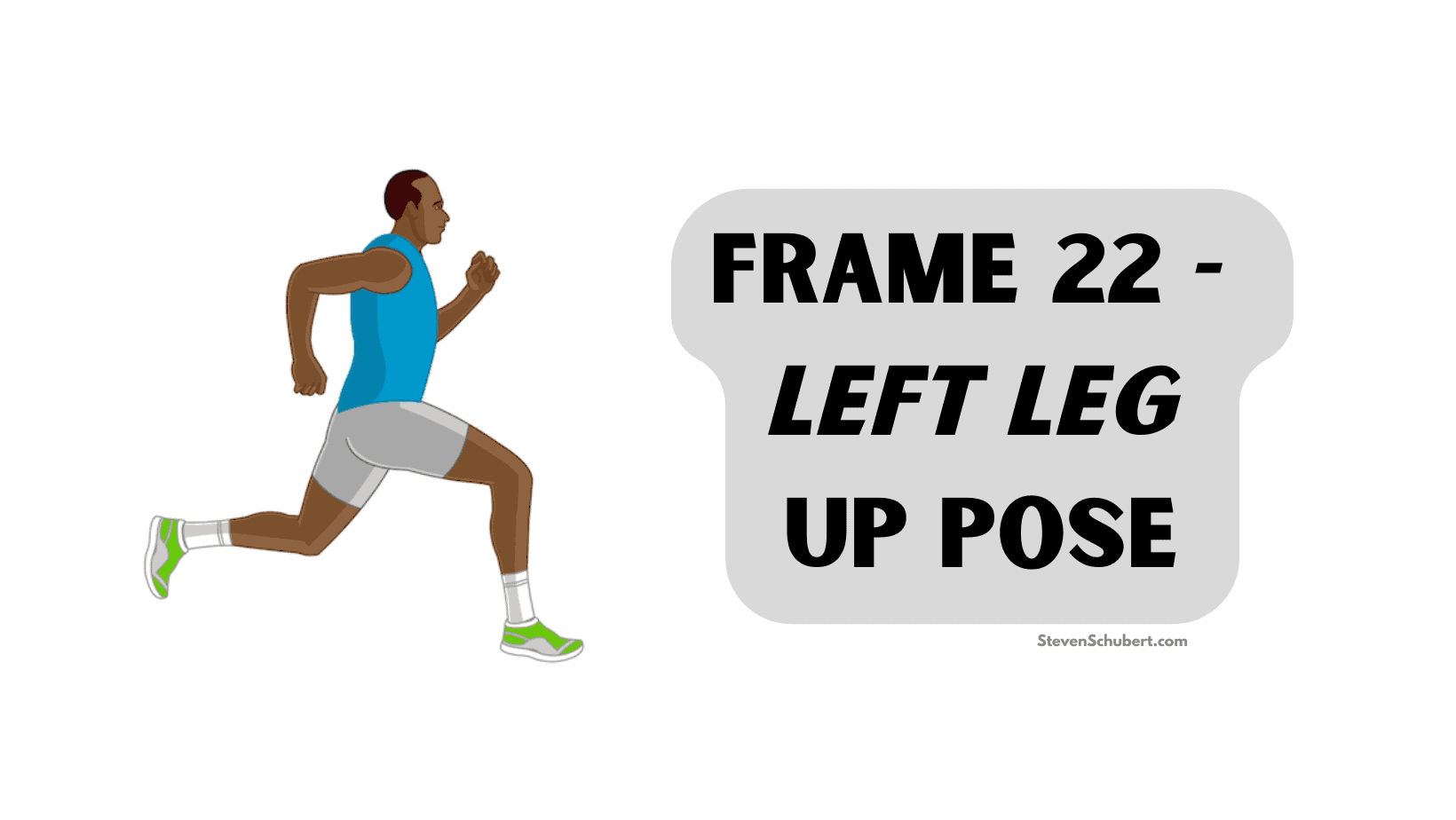
The character is completely in the air for the second time in the run cycle.
This frame occurs after the 'Left Leg Takeoff Pose' and before the 'Right Leg Contact Pose'.
The right foot now leads as the left leg begins to trail.
The legs are fully extended in opposite directions.
In the 'Left Leg Up Pose', the character's body is at its highest point.
The arms are fully extended away from each other.
Frame 25 - Right Leg Contact Pose

We return to Frame 1, except it's the next cycle, which would be on Frame 25.
The right foot contact pose repeats.
The trailing left foot is still airborne and behind the body.
Both the right and left legs are extended in opposite directions.
The arms are in opposition as well.
The arms are swinging back to the body's neutral position.
Filing in the Gaps

After creating the first 8 main poses in a run cycle, 16 other frames must be created as well to complete a 24-frame second animation.
This can be achieved in two different ways: frame-by-frame or tweening.
Frame-by-Frame

Traditionally, animators were drawing every single frame, including the intermediate in-between frames hooking up to those key poses.
Tweening
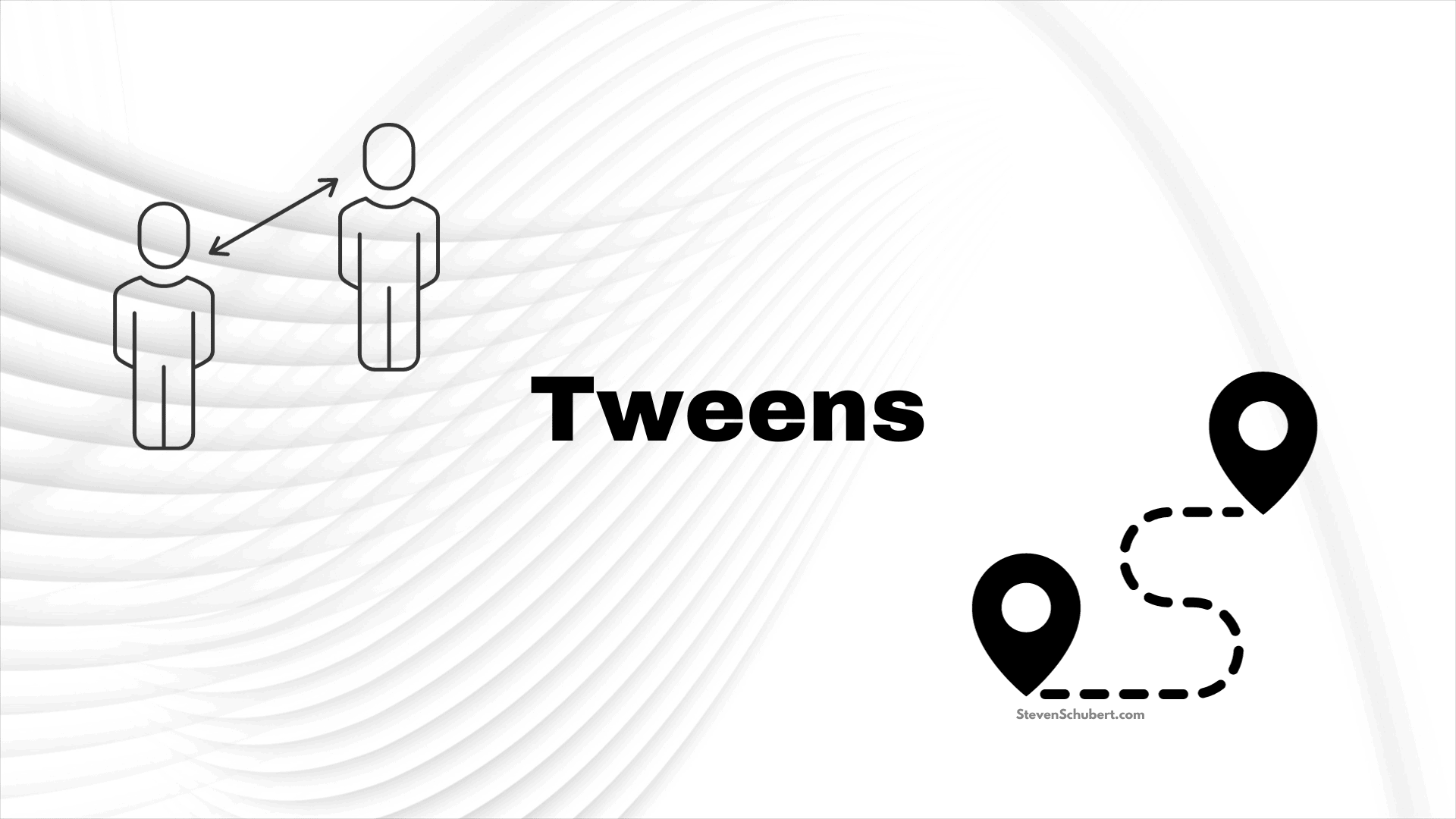
Animation software can take care of the time-consuming in-betweens. Just draw the key poses that you want your character to hit, and the software will create in-between poses, now formally coined as tweens.
Frame-by-frame is better for more of a custom animation.
The Movement of the Body

Unlike in walking cycles where the arms and head are free to do whatever action, a running cycle usually demands that the entire body moves as one.
Body Lean
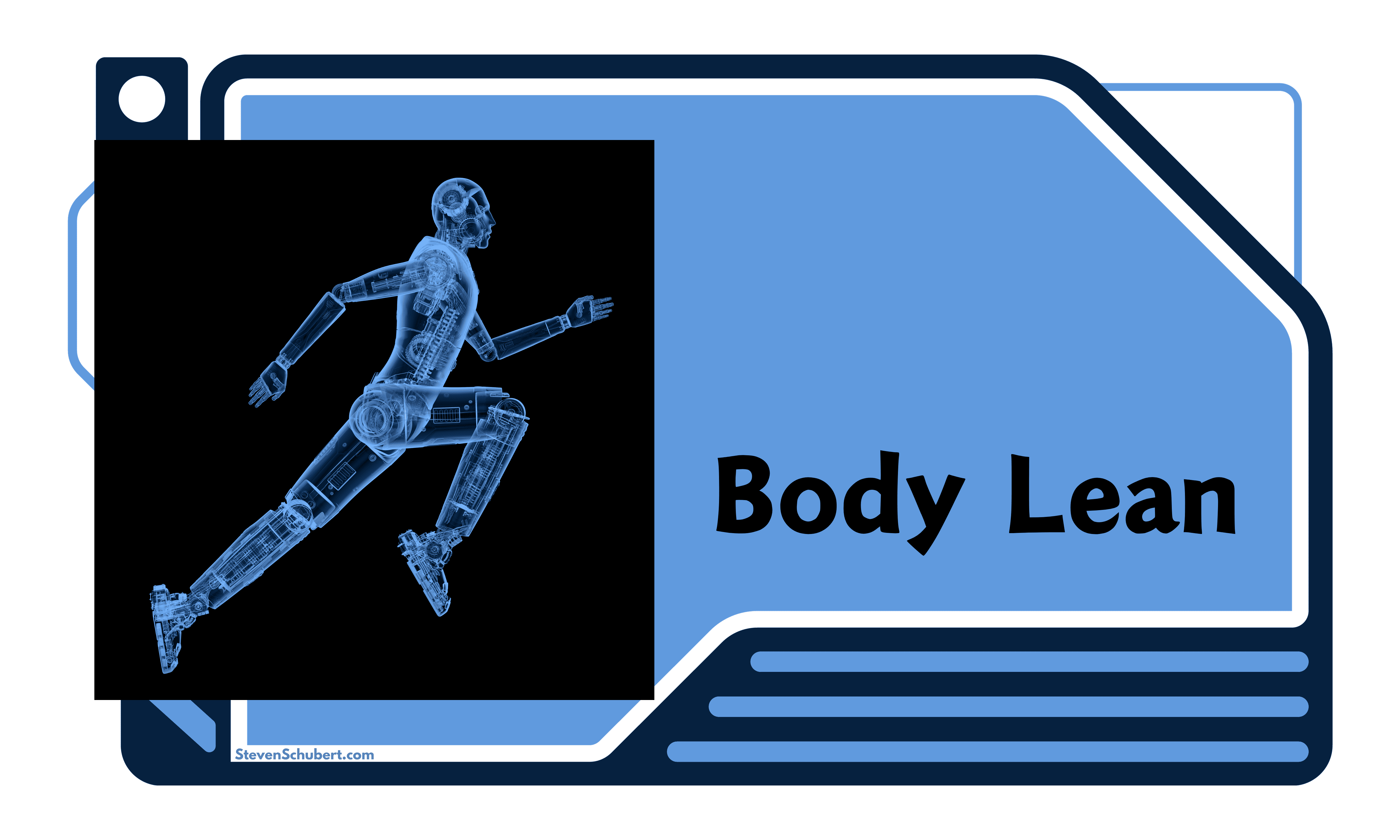
The body leans forward greatly in a running cycle.
Bend and Weight
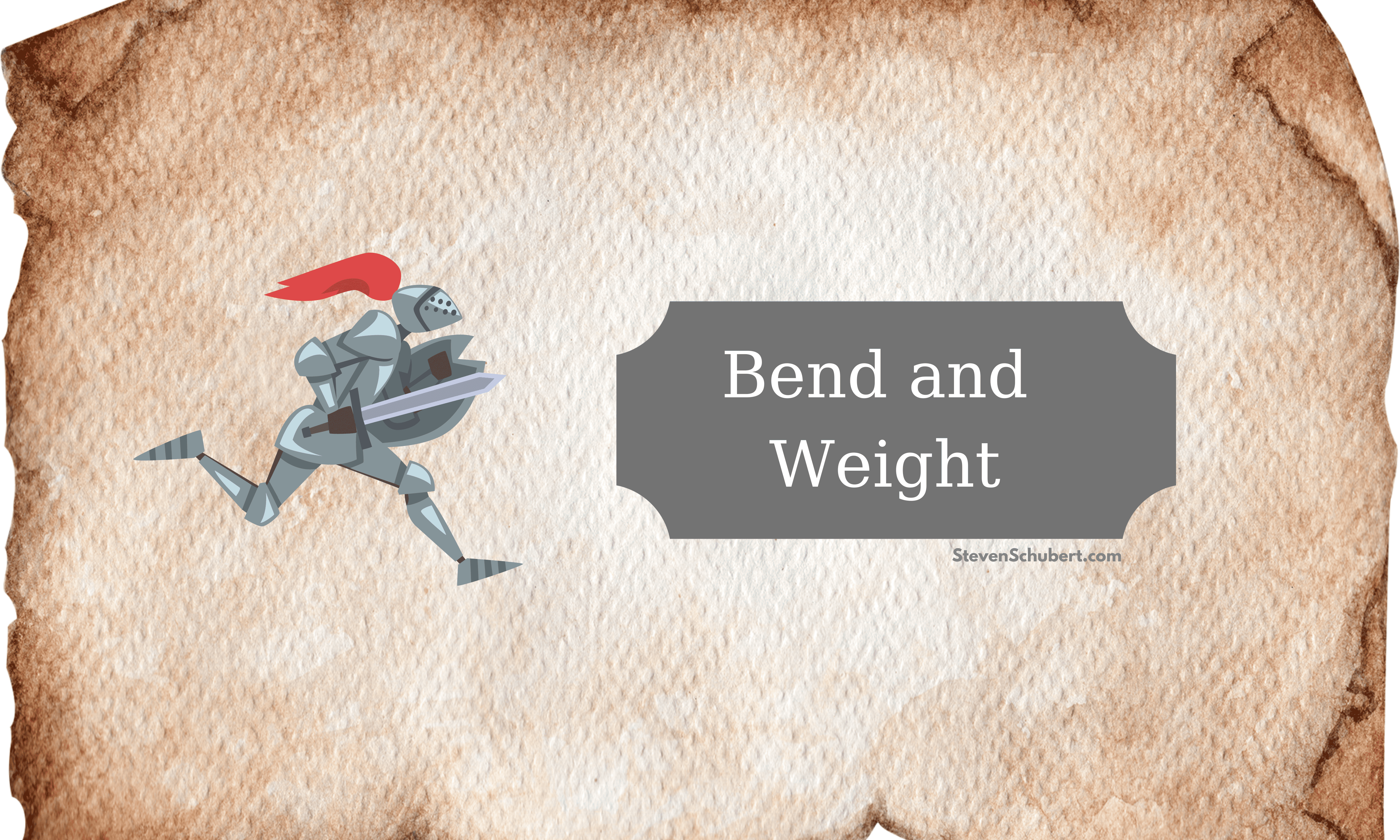
A heavy character, like a T-Rex, might display more bend in the legs and a lower position compared to a lighter character.
Hip and Shoulder Rotation
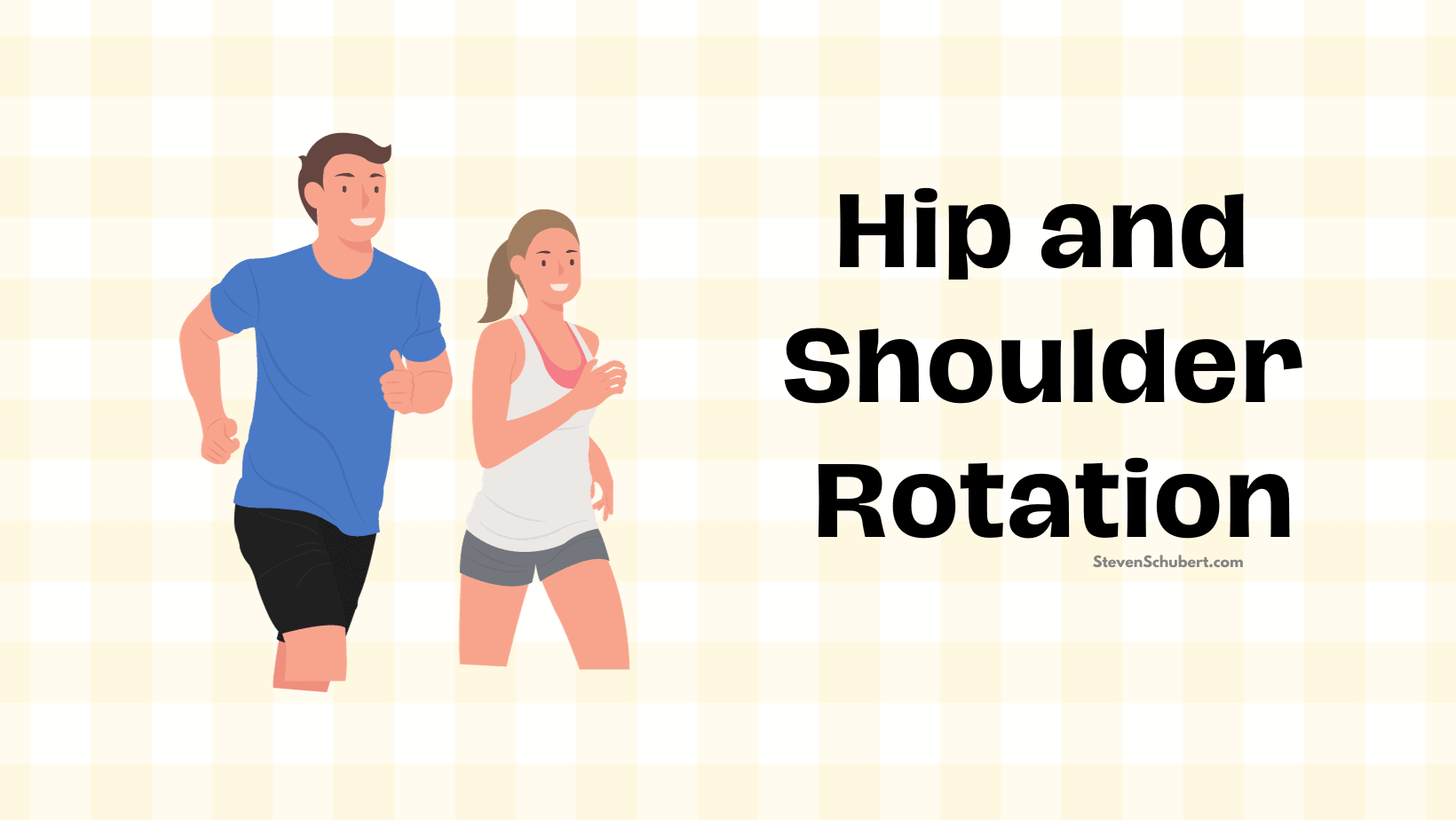
The hips and shoulders should teeter back and forth, going in the opposite direction of whichever leg is bearing the weight of the body.
Head Bob
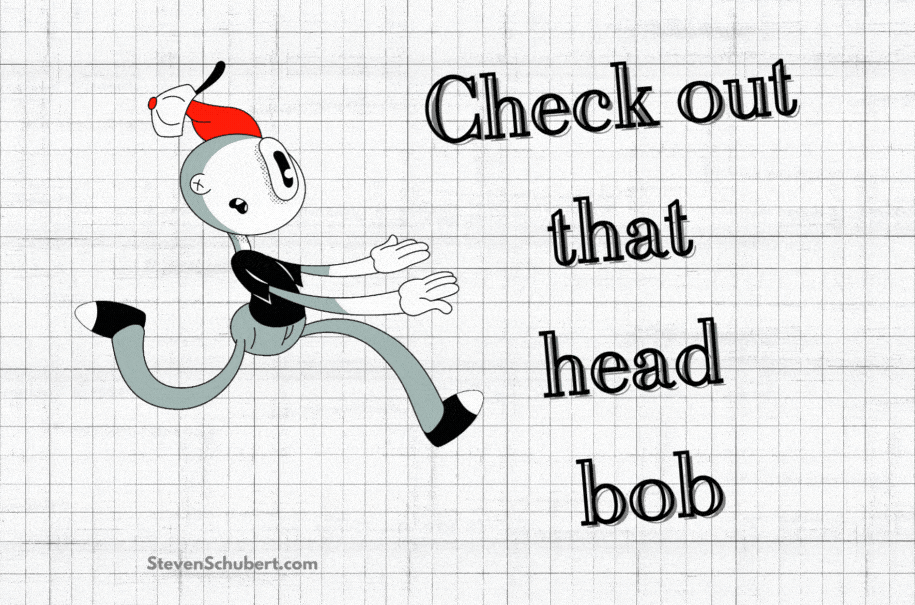
The character's head makes an up-and-down motion, usually offset by a couple of frames.
Arm Swing
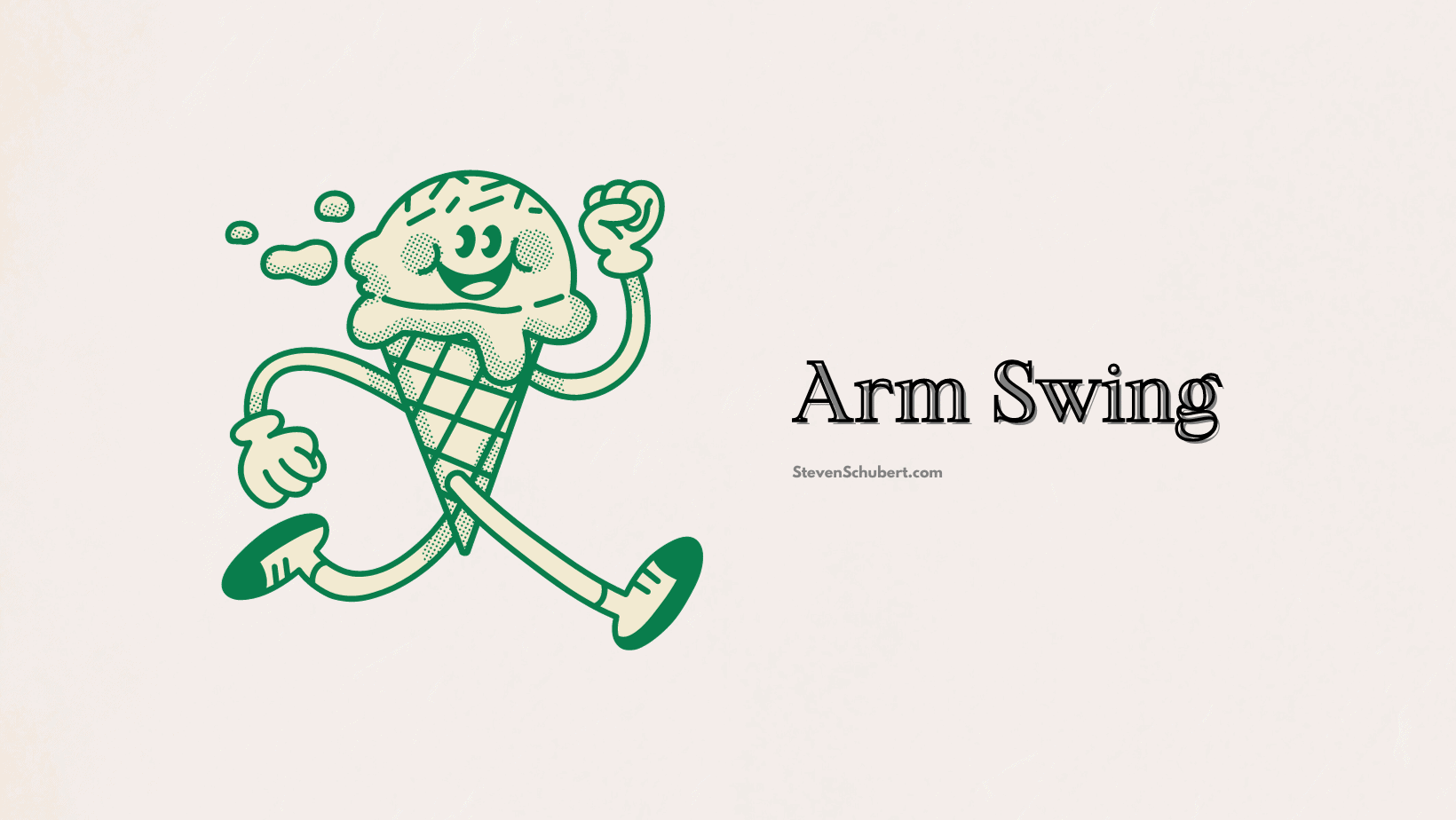
If the right foot is leading, then the left arm also moves forward in the same position; and visa-versa.
Adding Uniqueness
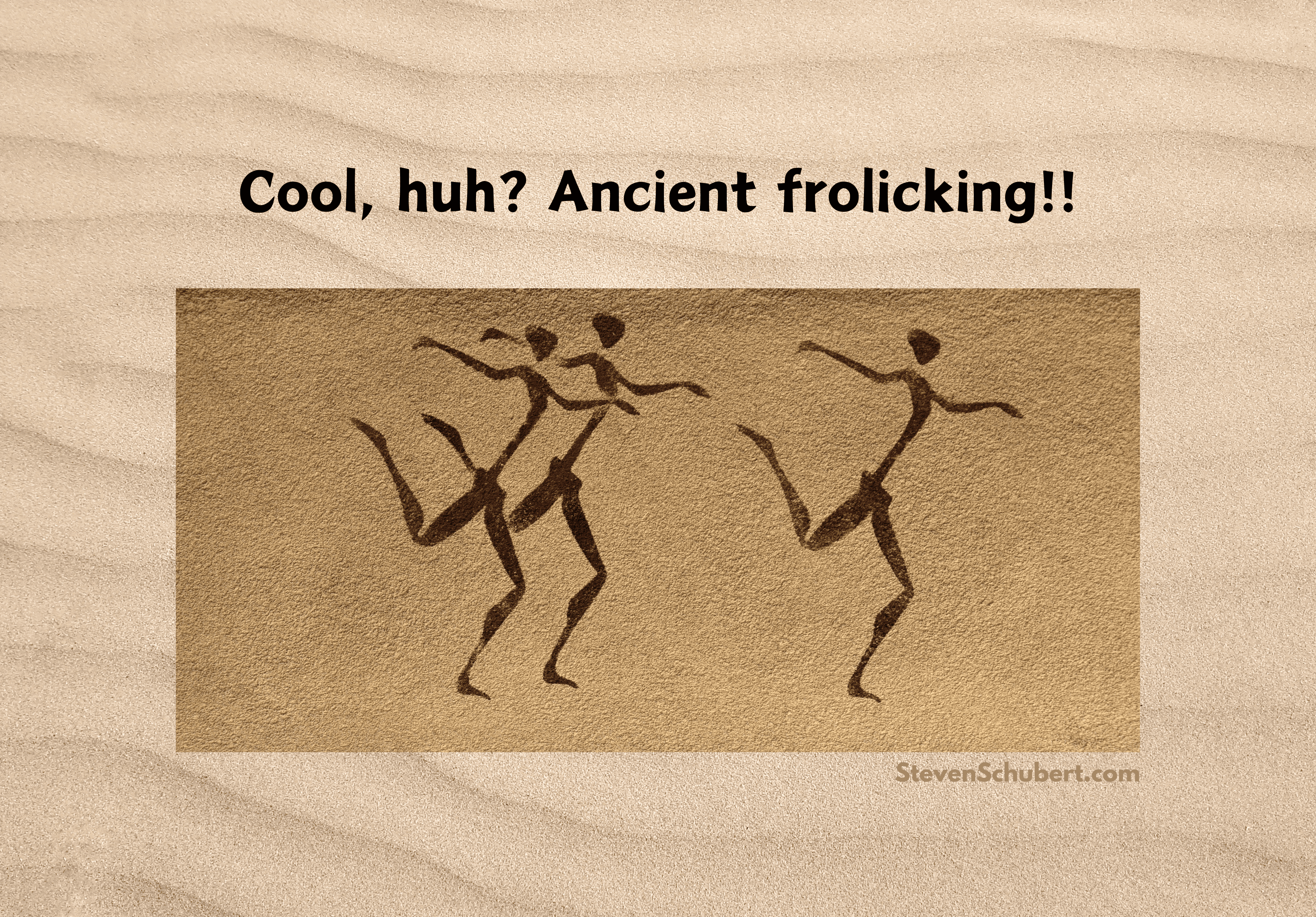
Each character will move a bit differently depending on their personality, the show's style, the environment, and the situation.
A character can skip, hop, sprint, and so on.
Speed
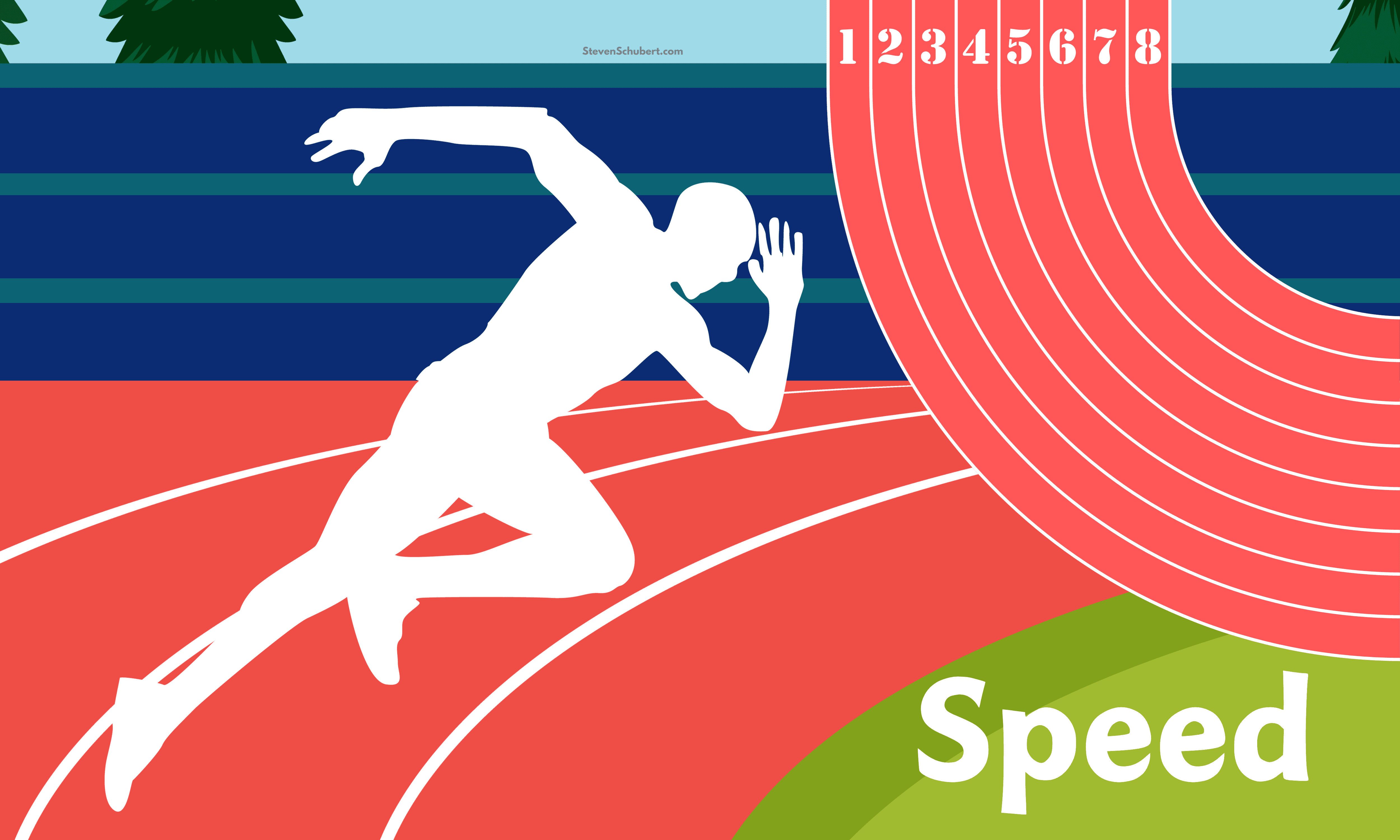
How hard the character pushes the pace of a run cycle usually exhibits how intense a scene is.
Offset
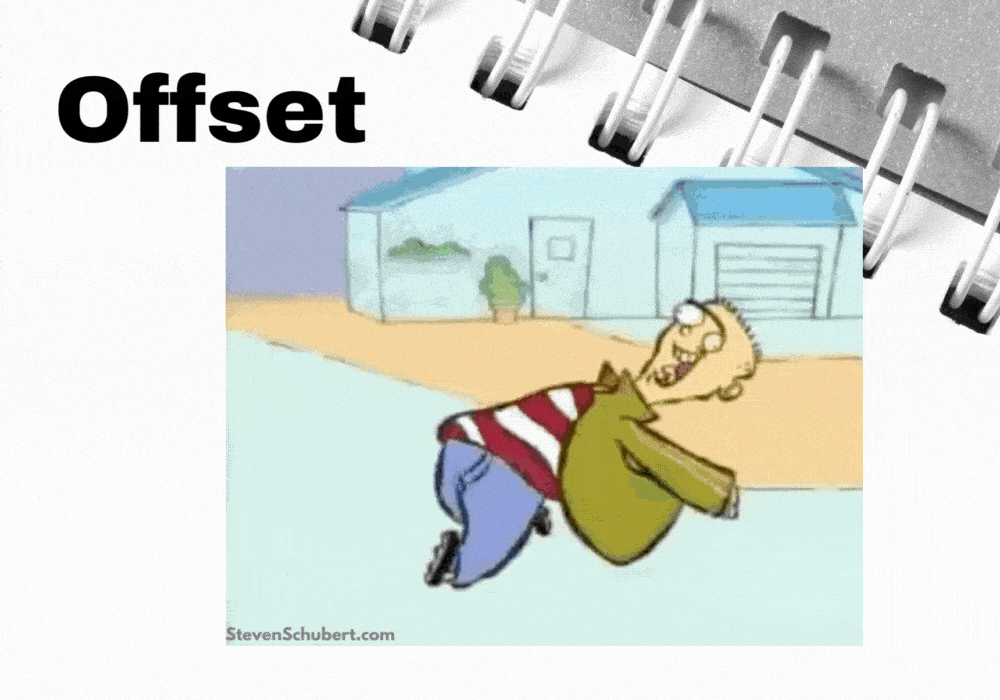
Delay or precede targeted parts of the body, such as the arms.
Position
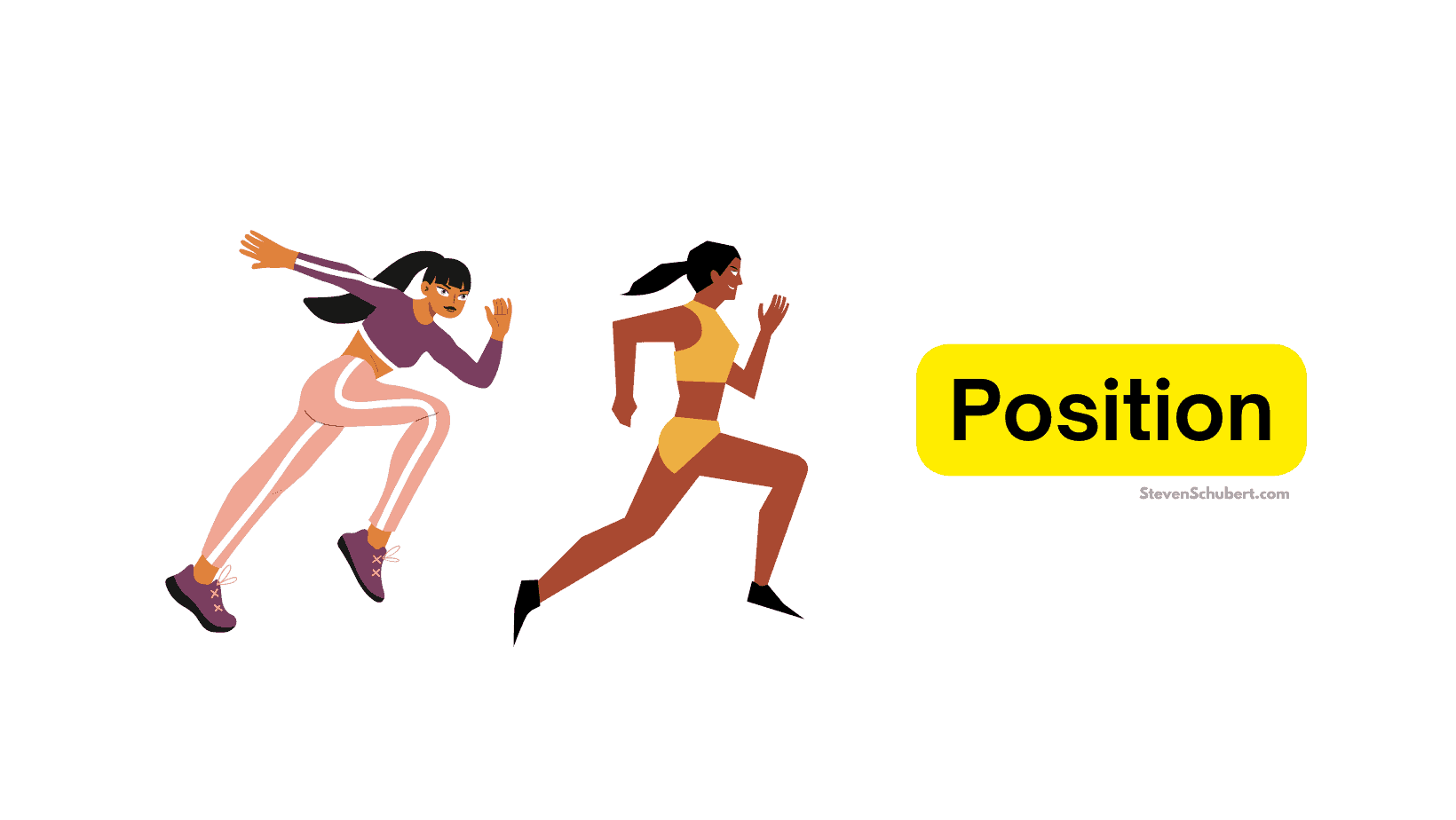
Fixing your torso, head, or arms can display certain emotions. For example, a droopy head during a run cycle might indicate that the character is in pain or sad. A leaned-back torso may mean a more light-hearted, fun run cycle.
Conclusion
This was a guide on how to make a running animation. Remember the 9 key poses!
Examples:
